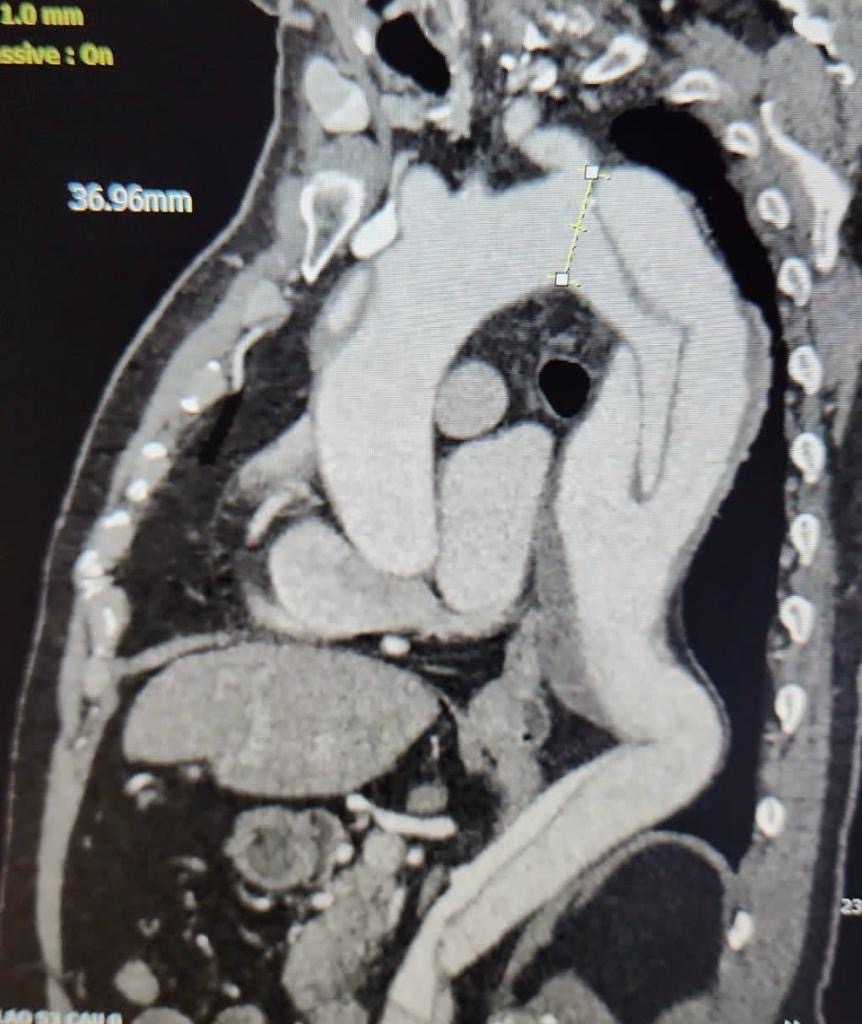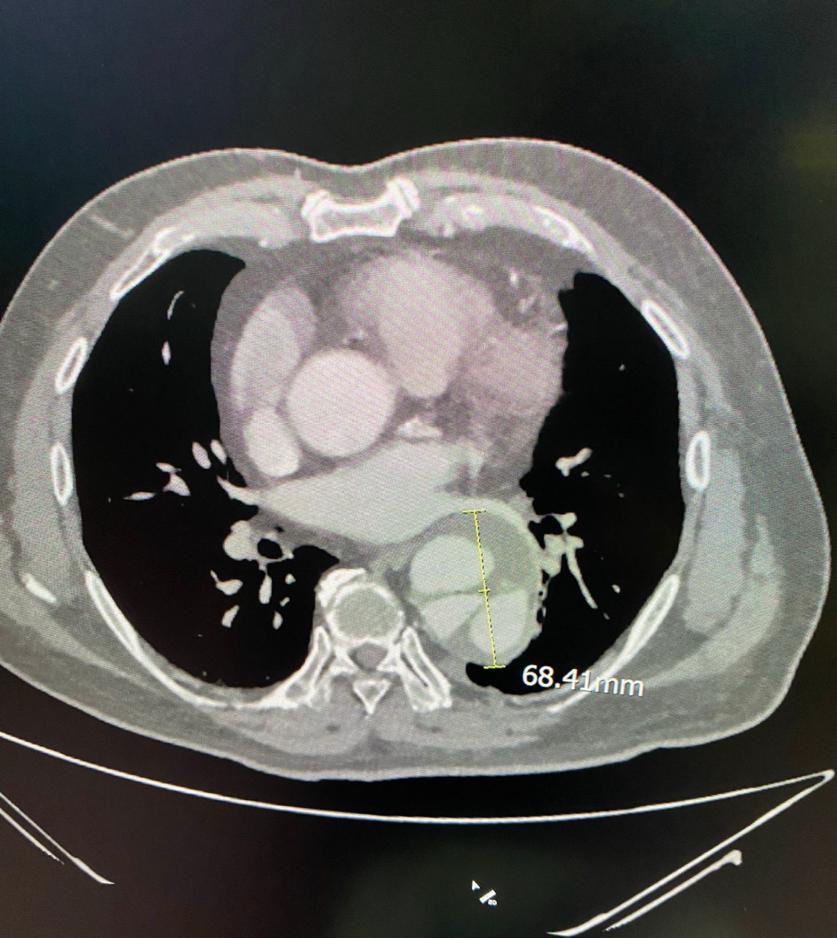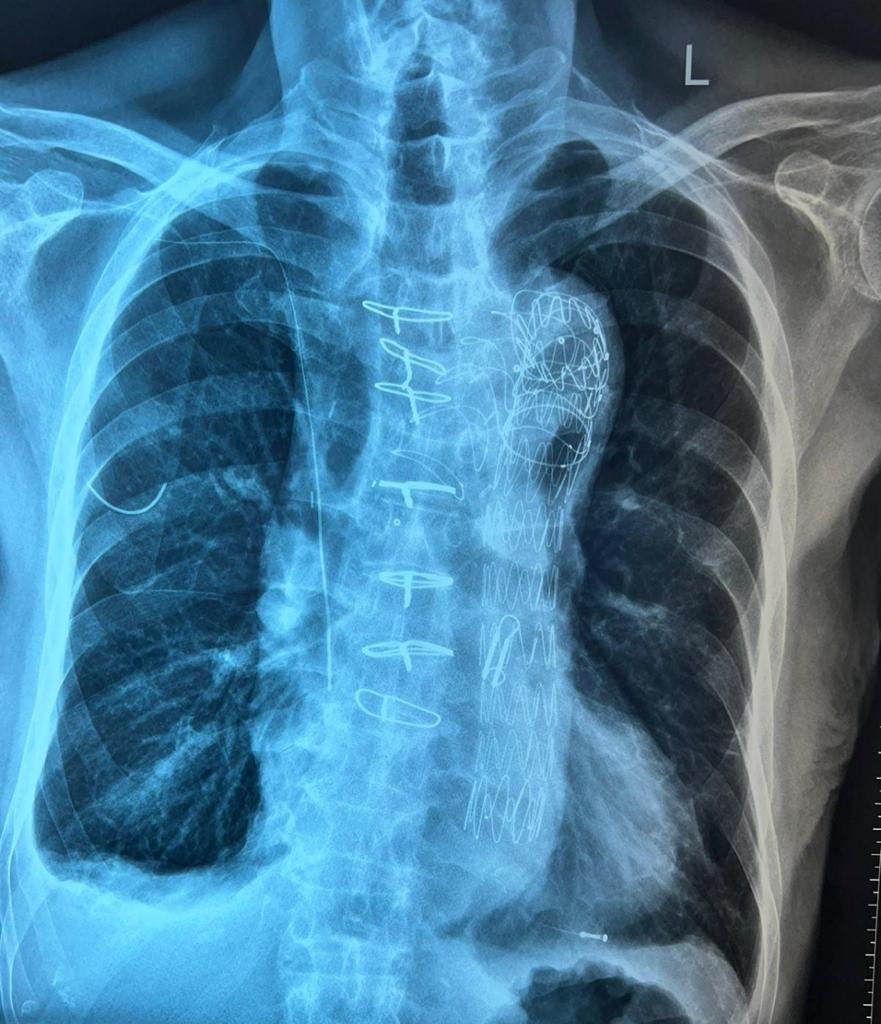Aortic dissection occurs when the inner lining of the aorta is split into two. It usually occurs when the forces in the blood flow from very high blood pressure damage the inner wall of the artery. The consequence of this is that it creates a double lumen in the artery.
If this occurs at the first part of aorta outside the heart to the level of left arm vessel (subclavian artery) it is called type A dissection. If dissection starts after the subclavian artery it is called Type B dissection.
What causes aortic dissection?
Aortic dissection is normally caused by uncontrolled high blood pressure. Because of high blood pressure, the shear forces of the blood pressure will split the inner lining of the blood vessel creating a double lumen. This can have grave consequences and normally is a surgical emergency.
Other risk factors include having connective tissue disease. This type of disease affects the elasticity of the tissues in the body. This happens in Mar fans or Ehlers-Danlos disease.
What are the symptoms of aortic dissection?
Aortic dissection normally presents with severe chest and back pain around the left scapula. It can also present with stroke-like symptoms or weakness of the legs depending on the extent of dissection. It’s not uncommon that aortic dissection is presented with symptoms similar to an acute heart attack or an acute stroke.
What are the consequences of having aortic dissection?


The consequences of aortic dissection can be divided into acute and chronic phases.
The acute phase depends on where the dissection goes. If the dissection goes into the blood vessels supplying the heart (coronary sinus), it will cut off the blood supply to the heart and the patient will have a severe heart attack and die immediately.
If the dissection ends in the carotid artery (artery to the brain), it will cause an acute stroke.
The dissection can end in the blood vessel to the gut (coeliac or inferior mesenteric artery). The small bowel and large bowel or liver can get the blood supply cut off and eventually, the internal organs will die off.
It is not uncommon for acute dissection to end in one or both kidney arteries causing temporary or permanent kidney failure.
Finally, and rarely the dissection can cause a cut off of the blood to the spine artery causing paralyses of the lower limb and loss of sensation in the lower half of the body.
The chronic phase occurs after the patient survives the initial dissection. The consequences will occur 5 to 7 years down the line. Because the lumen of the aorta is split into two, the whole aorta weakens and eventually it will expand and dilate forming what we call a dissecting aneurysm. It will expand like a balloon and finally rupture and this is considered to be fatal.
What are the treatments for aortic dissection?
Aortic dissection can be treated traditionally with open heart surgery for many years. Nowadays only type A dissection is treated with open heart surgery and the majority of type B dissection can now be treated with keyhole surgery – namely endovascular stenting.
With medical advances, some parts of the Type A dissection surgery can now be treated with Keyhole surgery depending on anatomy and local expertise.

Can we prevent aortic dissection?
With good control of blood pressure in patients with hypertension and for healthy individuals regular check-ups with your doctors once you are above 40 years of age, aortic dissection is preventable.
Regular exercise and stopping smoking will also reduce the risk of having aortic dissection.









